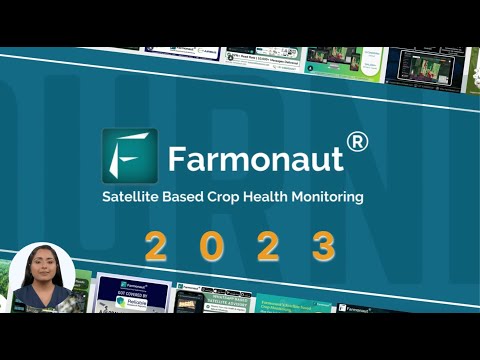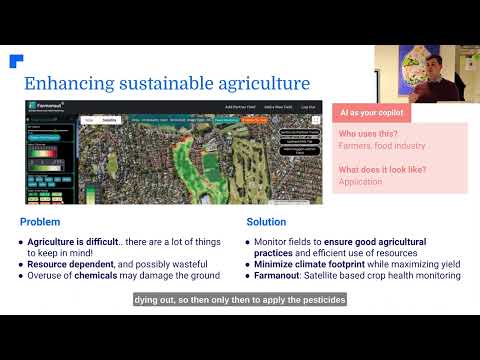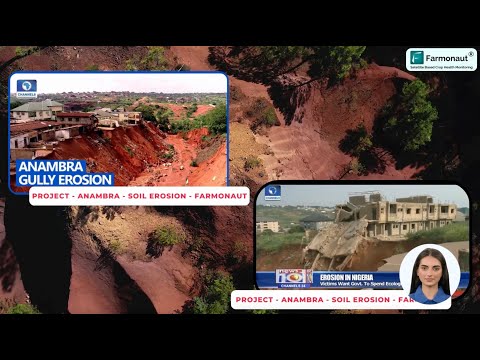Solar Farm Norfolk: Granting Permission for 200-Acre Green Scheme
“Norfolk’s proposed solar farm spans 200 acres, potentially replacing over 80 hectares of agricultural land with renewable infrastructure.”
Solar Farm Norfolk: Introduction and Context
Welcome to our in-depth exploration of the landmark decision to grant planning permission for a 200-acre solar farm scheme in Norfolk. This case, centering on the solar farm planning permission process near Reepham, brings together powerful concerns and opportunities: the impact of solar farms on the countryside, the contentious loss of agricultural land in Norfolk, and the broader sustainability implications of renewable energy schemes in the UK.
This blog post draws authoritative insights from the formal Broadland District Council (BDC) debate and the subsequent approval process. We analyze the diverse viewpoints, examine the environmental and economic impacts, and situate this scheme within the national context of large scale solar farms in England. Our aim is to provide clarity on the development, council deliberations, objections raised, and how innovations in precision agriculture — like those from Farmonaut — factor into sustainability decisions.
Meta Description:
Discover the solar farm Norfolk planning permission debate, its impact on agriculture and countryside, and how green schemes are shaping sustainable energy in the UK.
“Solar farms in the UK require formal planning permission, with over 1,000 applications reviewed nationally since 2020.”
Project Overview: Solar Farms in Norfolk’s Countryside
The proposed solar farm in Norfolk spans an impressive 200 acres — equivalent to more than 80 hectares — near the village of Pettywell, within sight of Reepham town. Backed by developers Albanwise Limited, the site will not only host solar panels capable of generating electricity for 14,000 homes per year, but also incorporate a substantial battery storage facility to store energy efficiently.
Broadland’s BDC planning committee granted a temporary 40-year permission for this green scheme after a closely contested vote (4:3), reflecting the significance and divisiveness of the proposal.
As we consider the impact of solar farms on countryside and local businesses, the location off Nowhere Lane — bordering the treasured Marriott’s Way green corridor and the Reepham conservation area — is at the heart of debate. It is essential to understand both the case-specific details and the broader substrate of regional and national renewable energy pressures facing our agricultural landscapes.
Key Project Features at a Glance
- Area Spanning: 200 acres of currently productive farmland in Pettywell, near Reepham
- Developer: Albanwise Limited, a company with almost 50 years of farming experience in Norfolk
- Energy Output: Designed to generate and supply green electricity equivalent to the needs of 14,000 households annually
- Battery Storage: Integrated battery storage site in Reepham to optimize energy supply and demand
- Temporary Permission: Limited to a 40-year operational period as per council conditions
- Borders & Infrastructure: Adjacent to 900 metres of Marriott’s Way, close to historic Reepham conservation area
These details set the stage for the heated discussions around sustainable development, countryside preservation, and balancing local needs.
Solar Farm Planning Permission: Council Process & Decision
To appreciate the magnitude of the broadland district council planning decision, we must examine the formal procedures, roles, and scrutiny involved.
The planning application for the solar farm was subject to the BDC’s procedural framework, facing over 80 objections from individuals and organisations — a clear indicator of divided local sentiment.
Council Committee: The Heart of Solar Farm Planning Permission
- Committee Deliberations: At a meeting lasting two hours, council members debated the scale of development, traffic, use of agricultural land, safety considerations for batteries, and the scheme’s overall impact.
- Approval Recommendation: Planning officers recommended approval despite community concerns.
- Key Voices: Conservative councillor Jo Copplestone led efforts to reject the application, citing risks to the bucolic character and tourism value of the countryside, while county councillor Greg Peck focused on loss of productive farmland and wildlife habitat.
- Majority Vote: The final committee decision was split, passing by 4 votes to 3. The proposal for rejection was narrowly turned down.
Why Is Planning Permission Essential for Solar Farms?
- Protects valuable agricultural land against inappropriate conversion
- Ensures community voices are considered, addressing local impacts
- Weighs sustainability, landscape preservation, and long-term energy needs
- Enforces regulations on battery storage safety, landscape integration, and environmental mitigation
The council’s role is precisely to balance these multifaceted factors, delivering decisions in the public interest for both present and future generations.
For agribusinesses and developers seeking to manage their environmental impact, Farmonaut’s Carbon Footprinting tool provides robust real-time emissions data and helps ensure compliance with sustainability targets, enabling responsible development monitoring for farms and green schemes.
Objections to Solar Farms: Local and Environmental Concerns
At every stage of solar energy development in the UK, objections to solar farms are not only expected—they are critical to a democratic and inclusive planning system. The 200-acre site near Reepham, spanning productive Norfolk farmland and valuable green infrastructure, generated significant pushback from the local community, business owners, and conservation groups.
Summary of Key Concerns & Objections
- Scale of Development: Many believed the scheme was too large for the proposed area, out of character with the existing landscape.
- Loss of Agricultural Land Norfolk: The potential to destroy good quality productive farmland was a central objection, especially in an era where food security is paramount.
- Visual & Landscape Impact: Fears were voiced about temporary or permanent blight on the countryside, loss of vistas, and negative effects on the bucolic landscape associated with tourism and the local economy.
- Traffic & Access Issues: The expected increase in construction and maintenance traffic through rural lanes was a recurring concern for village residents.
- Safety Concerns over Lithium-Ion Batteries: Questions about fire risk, hazardous material accidents, and the implications of battery storage sites in Reepham were raised by several objectors.
- Wildlife and Habitat: The potential impact on wildlife corridors and rare species in bordering greenways and conservation areas raised alarm among nature supporters.
- Harm to Local Businesses & Tourism: Many pointed to tourism as a vital local income stream likely to be harmed if landscape quality and Reepham’s reputation suffered.
Notably, Reepham Town Council objected to the scheme, and Conservative leader Greg Peck lamented the site choice, saying the application would “destroy good quality productive farmland as well as some wonderful Norfolk countryside and wildlife habitat.”
On the flip side, the site’s proponent, Albanwise’s Chris Banks, highlighted that their company had almost half a century of farming experience in Norfolk, reinforcing their commitment to sustainable and responsible land stewardship as part of community life.
Banks stressed the need to move away from fossil fuels, touting the solar farm’s positive role in carbon offsetting and the wider green energy transition.
If you operate multiple agricultural operations or coordinate construction and maintenance of solar farms, Farmonaut’s Fleet Management solution helps optimize resources, track vehicles, and lower operational costs while managing large-scale schemes and remote assets.
Balancing Sustainability, Agriculture, and Landscape in Solar Energy Development UK
One of the most challenging dilemmas for planners, councillors, and local communities is how to weigh the urgent call for renewable energy schemes in Broadland against the real, tangible impacts of the land lost to non-food production.
As proposed, the solar farm Norfolk project encapsulates classic trade-offs in British rural development:
- Food Security vs. Climate Security: Every hectare converted is one less producing food, but every tonne of carbon offset is a positive climate step.
- Biodiversity Risks vs. Habitat Opportunities: Construction and operation can disrupt existing habitats and corridors; however, managed solar farms often incorporate biodiversity buffers or wildflower meadows beneath arrays, reconstructing habitats once equilibrium is reached.
- Landscape Value vs. Visual Change: The identity and economy of rural Norfolk — from conservation areas to greenways like Marriott’s Way — are built on vistas and heritage aesthetics. Solar panel arrays, however necessary, present a jarring aesthetic transition, at least temporarily.
- Community Ownership vs. External Developers: Would greater local participation in scheme design and benefit-sharing help reduce opposition?
The National Perspective on Large Scale Solar Farms in England
- The 200-acre site is among a spate of major solar applications — including 5,000 acres proposed in Gissing, and multi-thousand-acre schemes near Dereham, Swaffham, East Pye, and Long Stratton — all reflecting the UK’s urgent climate obligations.
- More than 1,000 planning applications for solar farms reviewed since 2020 illustrate how widespread and vital this debate is to our energy future.
Mitigation, Monitoring, and Farm Management for the Future
The sustainability conundrum requires sophisticated monitoring and robust mitigation strategies. Platforms offering real-time tracking, environmental monitoring, and emissions analytics—like those from Farmonaut—are vital for evidence-based stewardship of both food and energy landscapes.
Tools such as Farmonaut’s crop plantation and forest advisory platform ensure best use of marginal land, promote responsible management, and safeguard against avoidable negative impacts on food supply and biodiversity.
Managing expansive solar or agricultural schemes? Farmonaut’s Large Scale Farm Management solution delivers holistic control and monitoring across vast holdings—crucial for ensuring sustainability in both traditional farms and renewable energy developments.
Battery Storage Site Reepham: Technology and Safety in Solar Infrastructure
An essential component of the Norfolk solar farm scheme is the battery storage facility at Reepham. Integrating advanced lithium-ion battery banks allows the site to store excess energy generated during peak sunlight and distribute it when grid demand is high.
However, as highlighted in committee debates and public objections, the technology brings new challenges:
- Fire Risk: Lithium-ion batteries, while highly efficient, have known fire and thermal runaway risks, requiring stringent safety standards and professional storage protocols.
- Site Security: Safeguarding batteries from vandalism or theft is an operational necessity.
- Chemical Management: Proper emergency planning for chemical accidents is mandated in planning terms.
- Grid Stability: Properly designed, battery storage enhances renewable supply reliability—minimizing the need for fossil back-up.
Ultimately, the solar farm’s battery storage element, while the subject of concern, also represents a key enabler for the green transition, making flexible, carbon-free power supply a reality.
Crop Loan & Insurance: Digital Verification for Risk Assessment
Projects utilizing land for alternative uses like solar farms or battery storage may affect underlying agricultural loan or insurance profiles. Farmonaut’s Crop Loan and Insurance verification tools streamlines digital land inspections, ensuring lenders and insurers make informed, real-time assessments, minimizing project and financial risk.
Impact Assessment Table: 200-Acre Solar Farm in Norfolk
To help visualize the spectrum of environmental, productive, and sustainability changes brought by this solar development, our “Impact Assessment Table” summarizes the most pertinent factors:
| Impact Category | Estimated Quantitative Value/Extent | Assessment Summary |
|---|---|---|
| Land Use Change | ~200 acres (over 80 hectares) of agricultural land repurposed | Conversion from crop production to renewable infrastructure; temporary, set for 40 years but significant displacement of food crops during operational period. |
| Biodiversity | Landscape bordering 900m of Marriott’s Way; potential for new wildflower or habitat buffers | Potential disruption of habitats; managed schemes can create alternative wildlife zones, but initial risk to existing flora & fauna. |
| Visual Impact | Affects significant rural viewshed near Reepham and conservation area | Visually intrusive arrays will change local character, though proposals may include screening or landscape planting in mitigation. |
| Agricultural Output Loss | 100% of site’s productive output removed for at least 40 years | Reduction in crop and local agricultural revenue; indirect effects on employment and food chain resilience. |
| Carbon Savings | Estimated 6,500 tonnes CO₂ offset annually; supplies 14,000 homes per year | Substantial contribution to district- and county-level emissions targets; supports national Net Zero transition. |
| Traffic & Infrastructure | Temporary increased heavy vehicle traffic during construction | Short-to-medium term inconvenience for local commuters; possible risks to rural lane stability. |
| Battery Storage, Safety | On-site lithium-ion storage with engineered containment | Enables grid stability; introduces new safety management and emergency planning obligations. |
| Tourism & Local Business Impact | No direct quantitative figure; local opposition from businesses | Uncertain effect; visual change and perception may impact tourism and leisure sector performance. |
Renewable Energy Schemes Broadland: Regional Trends and National Significance
As the Norfolk case underlines, Broadland sits within a national landscape rapidly responding to climate change mandates with solar energy.
A spate of other regional applications — Gissing’s 5,000-acre plan; 4,000-acre and 2,700-acre schemes near Dereham, Castle Acre, East Pye, Long Stratton, and Swaffham — highlight England’s embrace of large scale solar farms. But as Broadland district council planning discussions show, each proposal triggers intense scrutiny: who should shoulder the costs of lost farmland, altered skyline, and rural way of life?
- Local authorities are increasing expertise in balancing environmental benefit with rural preservation, refining the standards for approval, mitigation, and community engagement.
- Policies seek to direct solar development to less productive land wherever possible—but the sheer size of contemporary schemes means high-grade farmland inevitably comes into play.
- Battery storage innovations, including at the Reepham site, are transforming the grid landscape, enabling true 24/7 green supply.
These trends call for sophisticated monitoring—monitoring that Farmonaut’s satellite-AI platform enables for all major land users: food, forestry, and energy alike.
If you are a developer, agronomist, or sustainability researcher interested in deeper land and agro-data, explore Farmonaut’s Satellite & Weather API or view the Developer Documentation here for direct access to geo-temporal crop and land monitoring data.
How Data-Driven Precision Agriculture Solutions Aid Sustainable Choices (Farmonaut)
We, as stewards of land use and environmental planning, must now employ every technological advantage to ensure both food security and successful climate adaptation. Farmonaut’s advanced, satellite-based management platform represents a leap forward in how agricultural land — and indeed large solar or battery farm sites — can be monitored, managed, and improved.
Farmonaut: The Role of Satellite & AI Solutions in Planning & Management
- Crop Health Monitoring & NDVI Analysis: Farmonaut empowers farmers (and planners) to track crops, soil moisture, and vegetation health using up-to-date multispectral imagery—directly supporting informed application decisions.
- AI Advisory (Jeevn AI): Real-time weather and crop management tips, derived from machine learning on a user’s own satellite and field data, offers hyperlocal support for efficient, climate-smart operations.
- Blockchain Traceability: For those in food/energy supply chains, Farmonaut’s Traceability Tool brings security, transparency, and trust—vital when explaining land use changes to the public and regulators.
- Fleet & Resource Management: From managing solar farm construction equipment to ongoing farm logistics, Farmonaut’s fleet management tools help lower costs and streamline complex operations.
- Carbon Footprinting & Emissions Tracking: Critical for development sites required to document net-zero progress or offset achievements, Farmonaut’s suite generates live, field-by-field emissions and sustainability data.
Accessible via mobile apps (Android, iOS), web platform, and developer-friendly APIs, Farmonaut democratizes high-quality precision agriculture—powerful for everyone from smallholders to utility-scale developers in balancing productivity and sustainability.
Frequently Asked Questions (FAQ)
Q1: What is a solar farm and why are so many being proposed in Norfolk?
Solar farms are large-scale power plants that convert sunlight into electricity using photovoltaic panels. Norfolk has become a focal point for such schemes due to its availability of suitable flat land, good sunlight hours compared to other UK regions, and urgent local and national climate targets requiring more renewable energy sources.
Q2: Why did Broadland District Council grant permission despite objections?
The committee weighed planning policy against objections. Council officers recommended approval because the climate and sustainability benefits—offsetting 6,500 tonnes CO₂ annually—outweighed the disadvantages, including the loss of productive agricultural land. It was a close decision, reflecting the complexity of rural land use and green transition priorities.
Q3: How does the solar farm impact agriculture in Norfolk?
The project repurposes 200 acres of working farmland for 40 years, reducing immediate food production but contributing to decarbonisation. Such conversions can undermine food security if not balanced with national food strategy and smart land management practices.
Q4: What specific sustainability concerns were raised by councillors?
Concerns included loss of quality farmland, risk to local business and tourism, visual intrusion on classic countryside and conservation areas, plus battery fire and environmental safety risks.
Q5: How do platforms like Farmonaut help in sustainable farm and land management?
Farmonaut’s technology suite—real-time satellite crop monitoring, AI advisory, blockchain traceability, fleet management, and carbon tracking—facilitates data-driven decisions and helps users maximize yields, lower input costs, monitor environmental compliance, and promote sustainable land use — whether for food, forestry, or renewable energy.
Q6: For how long is the Norfolk solar farm allowed to operate?
The permission granted is “temporary” but substantial: the site is authorized for up to 40 years, after which restoration or reconsideration will be required.
Conclusion: Navigating Change for Norfolk’s Countryside
The granting of planning permission for a 200-acre solar farm Norfolk encapsulates the tension, hope, and responsibility at the centre of the UK’s rural green revolution. The Broadland District Council’s careful deliberations, narrow vote, and imposition of a forty-year temporary limit reveal just how finely balanced are the local, national, and global stakes.
As stewards of our landscapes and agricultural heritage, we must embrace sophisticated, data-driven, and community-integrated approaches. Combining advanced remote monitoring with transparent public dialogue ensures that both food security and the march toward net-zero emissions can progress, side by side.
Tools like Farmonaut’s precision agriculture solutions make it possible to responsibly monitor, document, and adapt land management as new energy infrastructure continues to shape our future. As more proposals reach the application stage—not just in Norfolk, but across England—the debate will remain lively, and the requirement for serious, evidence-based planning more vital than ever.
Ready to experience the power of precision agriculture or monitor your own land’s sustainability?
Thank you for joining us as we navigated the evolving world of British land use, renewable energy, and the vital role of technology-driven farm management.
Stay informed, stay sustainable.






